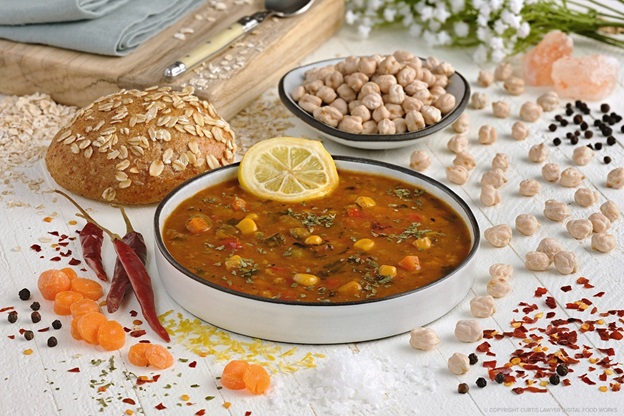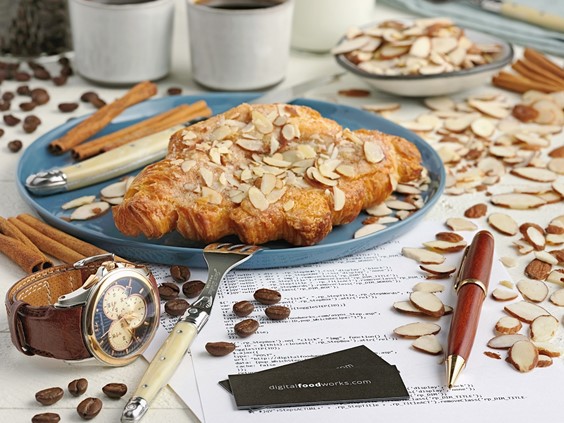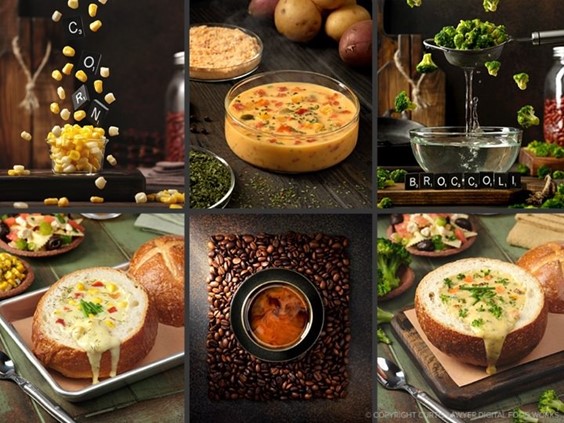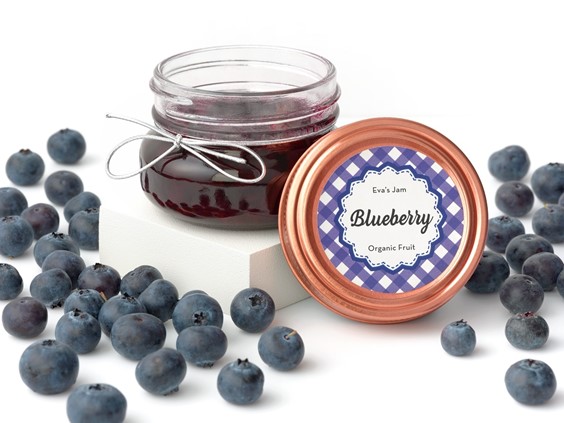Circular Polarizers and Reflective Soup Light
April 18, 2019Food Photography
 A circular polarizer (as it relates to cameras) is a little round piece of glass that you attach to the front end of your lens. Once attached, you can rotate it freely all the way around without it falling off. I guess you could put one in front of a cell phone camera and it would work just the same — but unless you have some way to attach it to your phone, you'll have to hold it in place over the phone's camera.
A circular polarizer (as it relates to cameras) is a little round piece of glass that you attach to the front end of your lens. Once attached, you can rotate it freely all the way around without it falling off. I guess you could put one in front of a cell phone camera and it would work just the same — but unless you have some way to attach it to your phone, you'll have to hold it in place over the phone's camera.Landscape photographers use polarizers to make the sky a deeper blue, and sometimes to remove the reflections on water. I use a circular polarizer in product photography to help control glare and reflections on reflective surfaces (but that's a different article). Recently, I was taking a picture of this bowl of soup, and instantly saw a reason to use a circular polarizer — and also thought it would make for a good, quick article, that attempts to show why you might use a circular polarizer when taking pictures of food.

Light waves are complex, circular polarizers are fun! You don't need to
know all of this stuff to use a circular polarizer. Just attach one to
your camera lens and rotate it until the reflections are blocked.
When holding a circular polarizer up to your eyes… it just kind of looks like window tint or a pair of sunglasses (some sunglasses use a different form of polarization to reduce glare) — but if you were to get really close (microscope kind of close)… you might start to see a microscopic pattern. It's probably easiest to think about the pattern being sort of like vertical blinds… a bunch of lines, slanted in one direction.

Circular Polarizers rotate freely in front of your lens. You can rotate them left or right. Rotating a circular polarizer half over (180°) produces the same result as when you started.
So, back to our soup…. basically — light bounces off of just about everything and creates reflections. Sometimes, those reflections can be a distraction, and make something look less saturated and more contrasty than you might want. Worse yet, if the reflected light is a color that doesn't match the food, it can be down right unappetizing.
Fortunately in the case of my soup, it's just a little gray and yellow light bouncing off the side of the dish (and the lemon), onto the soup, and straight into the lens — causing the uneven "waves" in the soup to be a little distracting. The soup should be all red and yummy… and not have ghostly smears on the surface. If you look too close, you might think they were cream or something — but it's not — it's just the side of the bowl reflecting back onto the soup.

In the case of my soup, there's a little gray and yellow light
bouncing off the side of the dish and the lemon, onto the soup, and then into the camera.
Adding a circular polarizer to the front of the lens and rotating it until the light reflections disappear is a great solution that allows the lights and main subject to stay where they are — matching our previous photos for the style guide — and getting rid of those pesky reflective light ripples.

Circular polarizers will only block reflective light from one direction, depending on the polarizer's angle of rotation. (You may have to zoom in on this one to see the "with" and "without" differences.)
Another side note — circular polarizers will only block reflective light from one direction. If there are complex reflections on your subject (like reflective light from the side of the bowl, and reflective light from the sky, and reflective light from a heat lamp, etc., the results will be less effective).
Once I get into the featured product that I'm shooting for this "Spring 2019 Style Guide", I'll try and include another mini example article like this one. When any kind of packaging is introduced into the photo, trying to control the light becomes a little more challenging than with food items. There are (generally) more straight, ridged lines and/or reflective surfaces with package material, than there is with organically shaped food.
Reducing reflections on the surface of the soup helps give the perception that the soup is one cohesive element. Now... your eye probably lands on the "lemon wheel, and then down to the soup below". Without the circular polarizer, the path was "lemon wheel, brighter distracting bowl light to the left, and then soup below".







